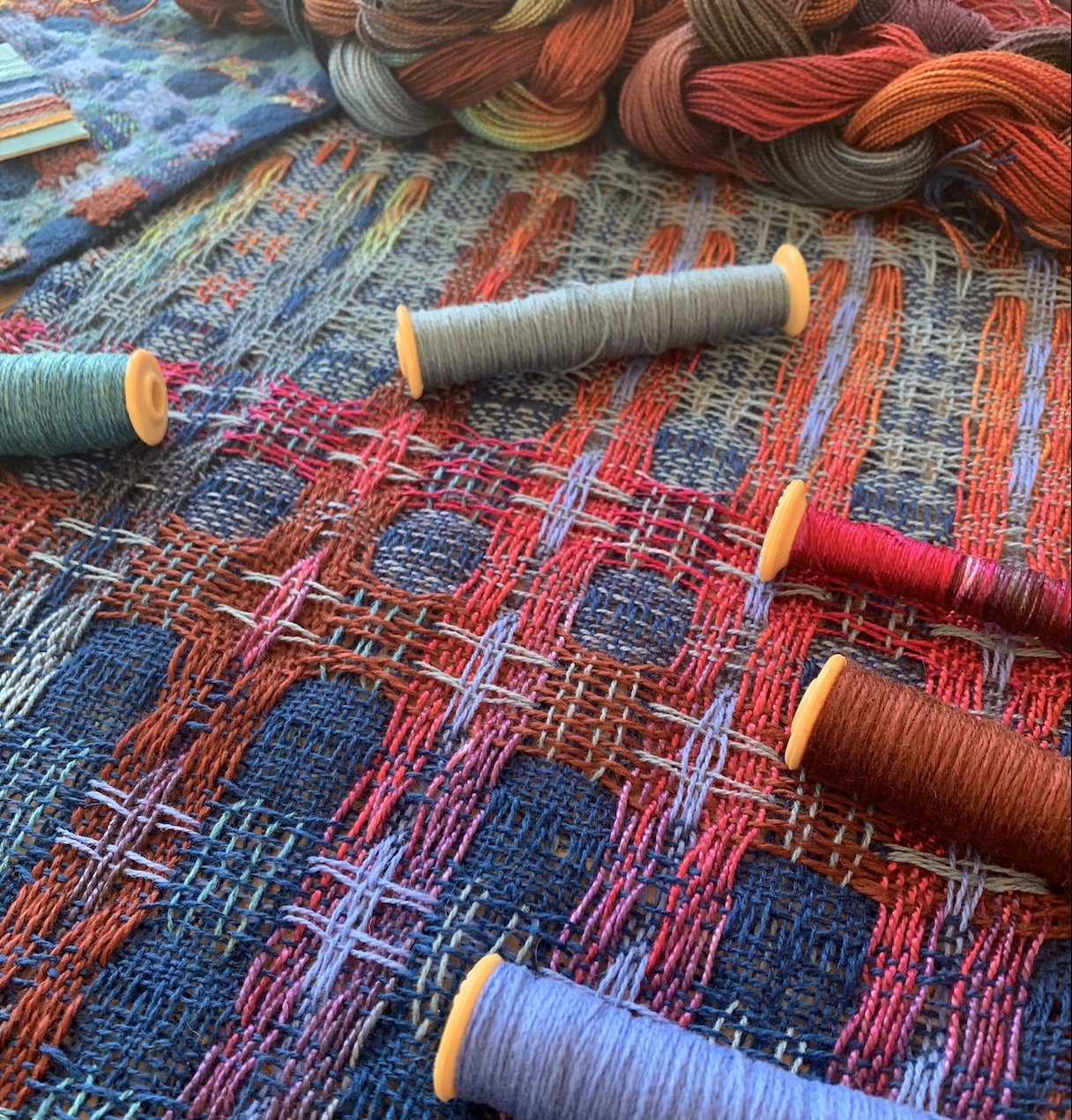Lambswool…”the first sheep sheering…the softest wool it will ever produce”
It’s been a while since I’ve blogged, but I want to share my recent work with 2/17 Nm merino Lambswool. Our 2021-22 Fort Wayne Weavers Guild Challenge was to sample and then weave a finished product. I chose to focus on weaving with lambswool and deflected doubleweave. I have been teaching a group of United Kingdom zoom weavers and they provided a lot of information about where I might purchase handspun lambswool. The majority of my Lambswool was purchased from Uppingham Yarns and spun by Z. Hinchliffe & Sons at Denby Dale, Yorkshire. My first attempt sett at 16 epi was to weave with a pattern I have come to call “Brocade” with lambswool in the warp. I did a color wrap to help me look at how the colors might sit next to each other in the warp. The “Brocade” slide from my Workshop Monograph shows the first threading and I had some subtle changes with different colors of lambswool across the warp.
My first lambswool sample seemed to be missing something, so I substituted some of the warp ends with some 3/2 Tencel warps painted by Kathrin Weber. The fulling of lambswool in lukewarm water happened almost immediately and with little agitation. I also found that 2/10 Merino Colrain lace yarn was a good weight yarn that mixed well with the lambswool.
Left: Original Lambswool Sample
Right: Lambswool/Tencel Sample
I became very interested in the textural interest the petrol lambswool created using as a weft across the weaving blocks in the treadling play for sample 2. Typically you lose design distinction, but in this case it allowed the texture to be showcased. I revisited a Doublewide Doubleweave blanket class I took years ago with Tom Knisely where I rotated colors in and out of plain weave and went back to the drawing board for my next project. I thought about making a lightweight blanket scarf. As a gift, I received a lambswool scarf woven by Veronica Pock in the Netherlands. To see more of Veronica’s weaving, visit her website at VeronicaPock.com. I wrote to Veronica and inquired about the draft and she indicated it had been woven on a 12 shaft table loom! I didn’t have 12 shafts, so I revisited an old deflected doubleweave draft published in Strickler’s Pattern Book of 8 Shaft Weaving and started to re-draft working on my design for hours. I wound wraps and wove samples using lambswool, tussah silk and silk noil. Sometimes I threaded lambswool and silk in 1:1 ratios and cycled yarns and colors in and out the threading block repeats across the warp. The colors and textures of the yarns worked beautifully together and it was the first time I used Japanese Ito Silk Noil yarn in both warp and weft.
I finished the lambswool scarf in just enough time to take to a workshop I was teaching to Medina Spinners and Weavers Guild in Ohio. I met many wonderful weavers there, but one weaver, Beth, has her own sheep farm. It was Beth who explained to me that the “very first shearing of a sheep when they are young is referred to as lambswool. It is the softest wool that the sheep will ever produce.” I can certainly say that my lambswool is soft, not scratchy at all and I decided to keep this sample for myself!








